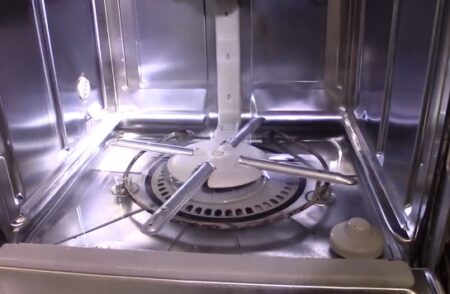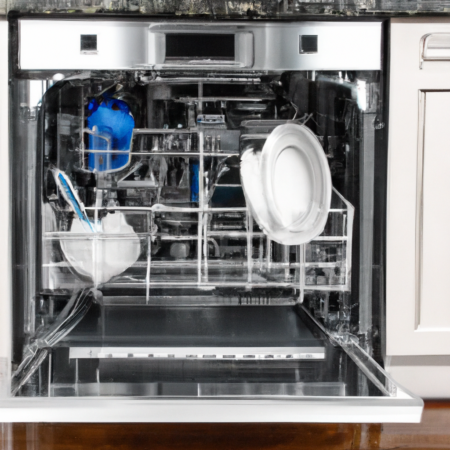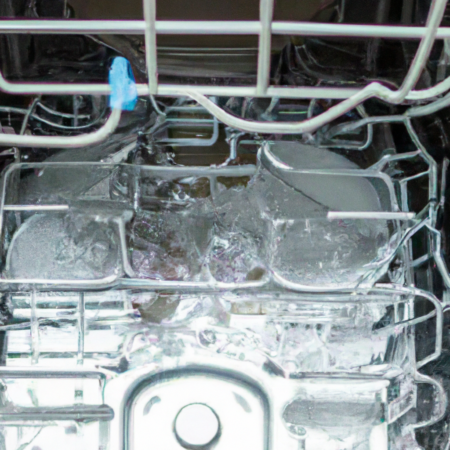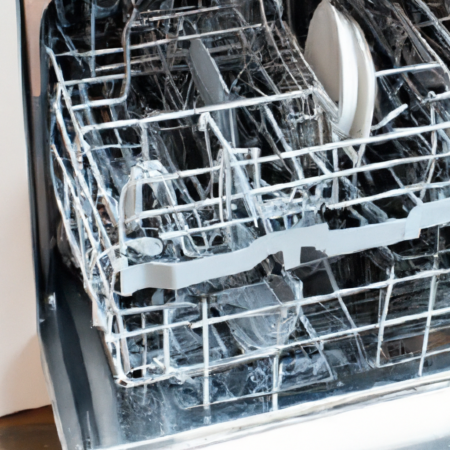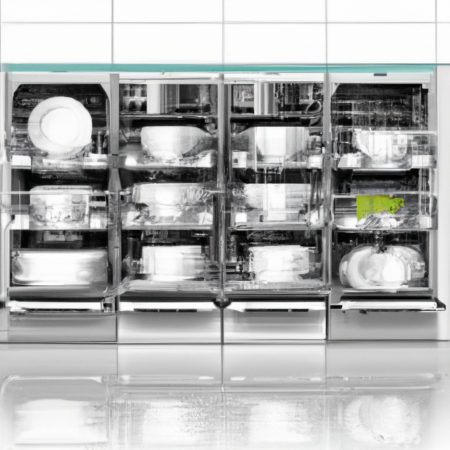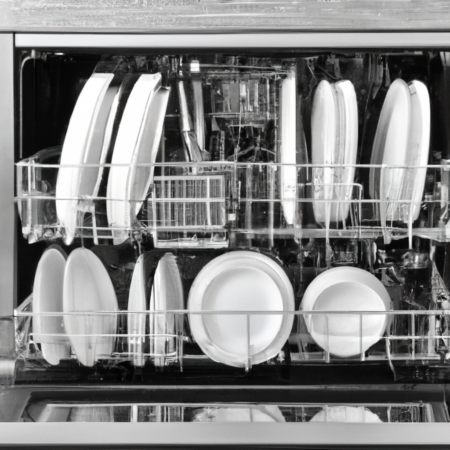What is Mold? Mold is a type of fungus that can grow anywhere with air and moisture present. Molds can be life-threatening in some cases. Dishwashers are the perfect breeding ground for molds, yeasts, mildews and, certain bacterias. If you see discolored patches on different parts of your dishwasher, it is molded.
You should get rid of any type of mold present inside or on your dishwasher to keep your dishwasher clean and free of any health hazards. No matter what type, mold can grow into a big problem leading to health risks. You need to clean your dishwasher regularly to help it clean your dishes immaculately.
In this article, we will share how you can remove mold from your dishwasher and prevent it in the future.
Mold in the Dishwasher: What Causes It?
Do you know what causes mold in the dishwasher? Dishwashers are the ideal breeding ground for molds as they have moisture, heat and, darkness. With time, food particles get stuck in certain areas of the dishwasher which become the nutrients required by molds for their growth.
With nutrients, heat, and moisture being available, it wouldn’t take long for molds to grow inside the dishwasher. While some types of molds are completely harmless, others can prove to be hazardous for your health. Mold spores are present in the air and they can grow anywhere with a damp environment and rotting food.
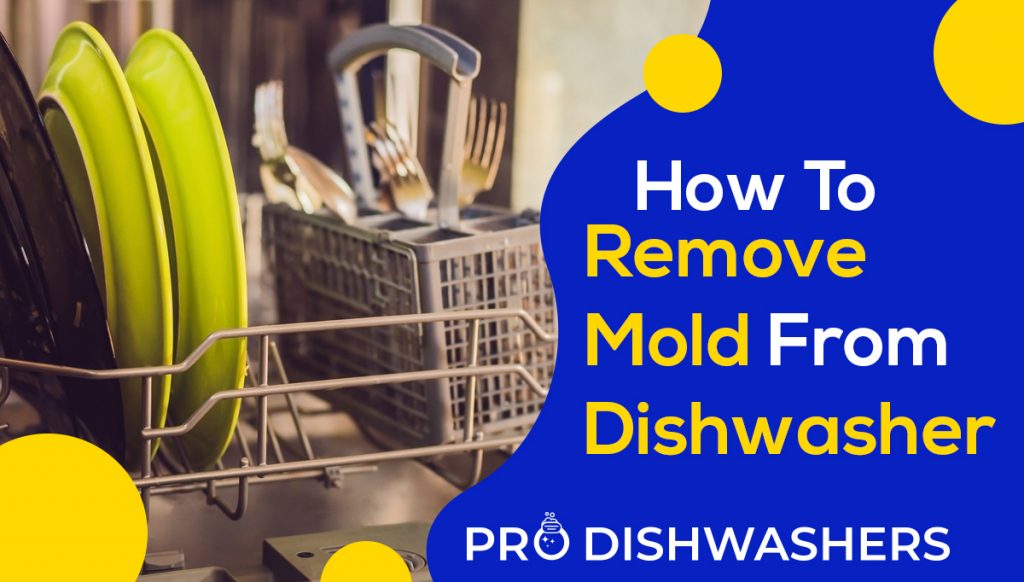
The black mold is known as “Stachybotrys Chartarum” is the one you’re most likely to encounter in the rear and beneath your dishwasher. This mold is extremely poisonous and can lead to a variety of health issues.
Orange mold is the second form of mold that may be found in dishwashers. This might seem like rust on your dishwasher parts or even on your dishes, and it could be easily mistaken for rust.
Pink mold is another form of mold that thrives in high humidity inside a dishwasher. Around the dishwasher, this mold will appear as light or bright pink foam or “marshmallow”-like growths.
READ ALSO
How Often Should You Clean Dishwasher?
Many people clean their dishwashers on a regular basis. This is due to the fact that cleaning the appliance may seem required on a regular basis. The reality is that keeping your dishwasher in good working order is crucial.
This is to ensure that it remains clean while also being able to function effectively. So, how frequently should you clean your dishwasher?
Deep Cleaning
Deep cleaning your dishwasher is very important. While deep cleaning, all parts of your dishwasher are taken out and washed separately. It is the best way to ensure complete cleanliness of your dishwasher and to get rid of all kinds of germs, fungal or bacterial growth. You should deep clean your dishwasher at least once to thrice annually. Deep cleaning prolongs your dishwasher’s life.
Regular Cleaning
You use your dishwasher on a daily basis to clean dirty dishes which is why you need to clean your dishwasher regularly too. Regular cleaning can avoid food and germ build-up in your dishwasher which can prevent fungal growth.
5 Ways to Keep Your Dishwasher Mold-Free
If your dishwasher smells foul and musty upon opening the door, there can possibly be mold growth inside of it. Mold growth is more common in regions that remain damp, such as cracks, and rubber parts, such as door seals, gaskets, and drain covers.
Other regions to look out for mold growth in the dishwasher are the bottom dish rack, drain hose, drain opening, drain strainer, and vent. Mold can also grow in places around your dishwasher.
Here are five ways in which you can clean a moldy dishwasher.
1- Cleaning Dishwasher Filter
To keep your dishwasher mold-free, clean its filter after every wash cycle to avoid food debris getting stuck and to get rid of any germs left after the wash cycle.
Take the filter out and clean it with dishwashing detergent or with vinegar, place it in hot water for 10 to 15 minutes, and then put it back inside once it has dried.
2- Cleaning Dishwasher Interior
To clean a moldy dishwasher, remove all the racks and empty the dishwasher’s stainless steel interior. Mix white vinegar and baking soda with water and transfer the mixture into a spray bottle. Spray this mixture inside your moldy dishwasher and scrub it with an old toothbrush or a sponge for 10 minutes.
Leave the mixture on for 15 to 20 minutes and then run a hot wash cycle, rinse and run another full wash cycle. Keep the dishwasher door open until it has dried to prevent mold.
3- Cleaning Spray Arms
The function of spray arms is to shoot water with high pressure at the dishes to substitute scrubbing. The holes of the spray arm can get clogged due to germs, mold, or food debris. You should clean the spray arms every two weeks to get rid of any food residue and build-up to prevent mold growth.
Remove both spray arms and keep them in hot water for 30 minutes, poke the holes of the spray arms with a wire to unclog them. Place the spray arms in white vinegar overnight to kill all germs present. Rinse the spray arms with water and place them back once they have dried completely.
4- Sanitizing Rubber Seals
The most commonplace for mold growth is around the door gasket and rubber seal of the dishwasher, as these places are hidden and dark. You need to take all the rubber seals off and sterilize them.
Start by removing the door seal and washing it with hot water, scrub it with a dishwashing detergent and leave it on for a couple of minutes. Rinse with hot water and put it back on after it has fully dried.
5- Cleaning Dishwasher Exterior
Mold can grow on the area surrounding your dishwasher too, to get rid of it you need to clean the exterior of your dishwasher and the areas surrounding it. To clean mold from the exterior of your dishwasher, apply white vinegar and sprinkle baking soda all over it.
Scrub the area with a sponge and leave it on for 10 to 15 minutes. Clean it with a damp paper towel. There is no need to use harsh chemicals to eliminate mold as white vinegar and baking soda can do a great job against molds without harming your dishwasher. Vinegar also helps get rid of the musty odor.
READ ALSO
How to Prevent Mold Growth in a Dishwasher
Cleaning the mold out of the dishwasher is insufficient. You should also maintain your dishwasher clean to ensure that mold does not return. Cleaning should be done on a regular basis. Dish soap or detergent should be used to clean the interior and all pieces individually.
Alternatively, you may clean the dishwasher when the racks are empty by running the cycle. For a better and cleaner outcome, use a chlorine-based detergent.
Finally, you must remove mold from your dishwasher as soon as possible before it spreads to a bigger area and endangers your health. Follow the proper cleaning procedure with whatever mold-killing agent you choose to clean the moldy dishwasher. As a consequence, you’ll obtain the optimum outcome while saying goodbye to the mold.
Here are some other ways you can prevent mold from growing in your dishwasher
1- Food Particles
The food particles which get stuck in various parts of the dishwasher become a great nutrient source for molds and mildews. To avoid that, remove any leftover food particles from your dishwasher. Check areas such as the filter and the bottom of the dishwasher for food residue.
Make sure to remove any food debris from the racks of your dishwasher. Rinse dirty dishes before placing them in the dishwasher.
2- Door Gaskets
Door gaskets are the epicenter of molds in the dishwasher since they are hidden, dark, and damp. Molds can easily go unnoticed, growing in such places. you should regularly sterilize and wash the door gaskets and other rubber seals of your dishwasher.
3- Moisture
Moisture is one of the main reasons why a dishwasher is the ideal breeding ground for molds, not only does moisture invite germs, fungus, and bacteria, it can also damage your dishwasher.
Remove all racks of your dishwasher and completely dry them after every wash cycle. Keep the dishwasher door open and let the dishwasher dry completely following a wash cycle.
4- Heat
Though heat can promote fungal growth, using the dishwasher in its hottest setting can help in preventing mold. Run a hot water cycle in an empty dishwasher every other day to prevent mold.
How to Keep Mold from Reappearing In Your Dishwasher
Your dishwasher does a fantastic job washing your dishes every day, but that doesn’t mean it doesn’t require some attention. Dishwashers are wet and gloomy for the majority of the time, providing ideal conditions for mold and germs to thrive. So, even though your dishes appear to be spotless, you must keep those germs under control in order for them to be genuinely sterilized. Taking care of your dishwasher can help keep mold at bay and ensure that your dishes are as clean as possible.
Keep your dishwasher door open a bit to avoid mold formation; when your dishwasher has a persistent nasty odor, leaving it open rather than clamped shut fully eradicates the stench.
After unloading a clean cycle of dishes, it’s beneficial to leave the dishwasher totally open for an hour or more. This allows the dishwasher to dry fully, making mold growth more difficult. Use white vinegar religiously to disinfect your dishwasher.
READ ALSO
Conclusion
In conclusion, molds can be easily handled and eliminated by taking a few steps. Mold may be deadly regardless of where it grows. Your dishwasher is your first line of defense against bacteria that can grow on your dishes and make you or your family sick. This can be exacerbated if mold develops within the machine and spreads to your dishes, cookware, and utensils. This mold growth might get you and your family sick if you eat it. As a result, keeping your dishwasher clean and in working order is critical to your health.






